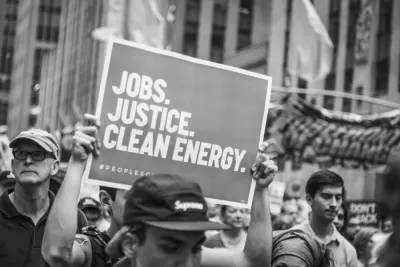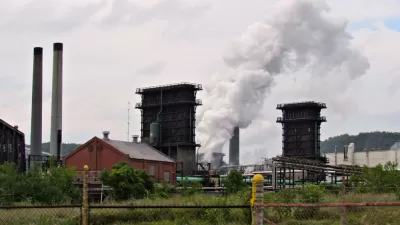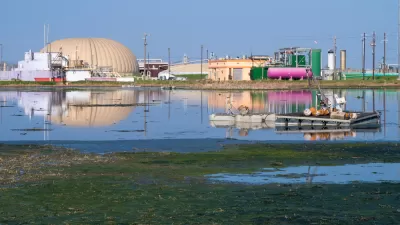A bombshell series of stories details the environmental and health costs of many fo the Trump administration's industry friendly regulatory decisions.

"Beyond the glare of Washington, President Trump's retreat on the environment is unfolding in consequential ways for the health and safety of Americans," according to an interactive feature by a team of investigative New York Times reporters.
Eric Lipton, Steve Eder, John Branch, and Gabriella Demczuk contribute to a series of articles that paint a scary picture, according to the introduction to the series:
In just two years, President Trump has unleashed a regulatory rollback, lobbied for and cheered on by industry, with little parallel in the past half-century. Mr. Trump enthusiastically promotes the changes as creating jobs, freeing business from the shackles of government and helping the economy grow.
The trade-offs, while often out of public view, are real — frighteningly so, for some people — imperiling progress in cleaning up the air we breathe and the water we drink, and in some cases upending the very relationship with the environment around us.
An article by John Branch and Eric Lipton discusses the willingness of the Trump administration to dismiss the advice of experts—at the expense of farm workers in California. Another article by Eric Lipton discusses the EPA's support for the coal industry outside Houston, and the air quality benefits that have been lost as a result. Steve Eder and Eric Lipton detail the rollback of Obama administration-era regulations crafted to protect the Kanawaha River in the "Chemical Valley" section of West Virginia. Finally, Eric Lipton also reports from Fort Berthold, North Dakota, where natural gas flares allowed by the Trump administration.
"Like other communities around the country, Fort Berthold is confronting a tension at the heart of Mr. Trump’s unrelenting push to roll back regulations governing a range of industries: Cutting the costs associated with environmental protection can generate substantial short-term economic gains while producing longer-term and potentially profound health and environmental effects," writes Lipton.
FULL STORY: ‘This is our reality now.’

Maui's Vacation Rental Debate Turns Ugly
Verbal attacks, misinformation campaigns and fistfights plague a high-stakes debate to convert thousands of vacation rentals into long-term housing.

Planetizen Federal Action Tracker
A weekly monitor of how Trump’s orders and actions are impacting planners and planning in America.

In Urban Planning, AI Prompting Could be the New Design Thinking
Creativity has long been key to great urban design. What if we see AI as our new creative partner?

Making Shared Micromobility More Inclusive
Cities and shared mobility system operators can do more to include people with disabilities in planning and operations, per a new report.

Car Designs Make it Harder to See Pedestrians
Blind spots created by thicker pillars built to withstand rollover crashes are creating dangerous conditions for people outside vehicles.

Cal Fire Chatbot Fails to Answer Basic Questions
An AI chatbot designed to provide information about wildfires can’t answer questions about evacuation orders, among other problems.
Urban Design for Planners 1: Software Tools
This six-course series explores essential urban design concepts using open source software and equips planners with the tools they need to participate fully in the urban design process.
Planning for Universal Design
Learn the tools for implementing Universal Design in planning regulations.
Appalachian Highlands Housing Partners
Gallatin County Department of Planning & Community Development
Heyer Gruel & Associates PA
Mpact (founded as Rail~Volution)
City of Camden Redevelopment Agency
City of Astoria
City of Portland
City of Laramie





























